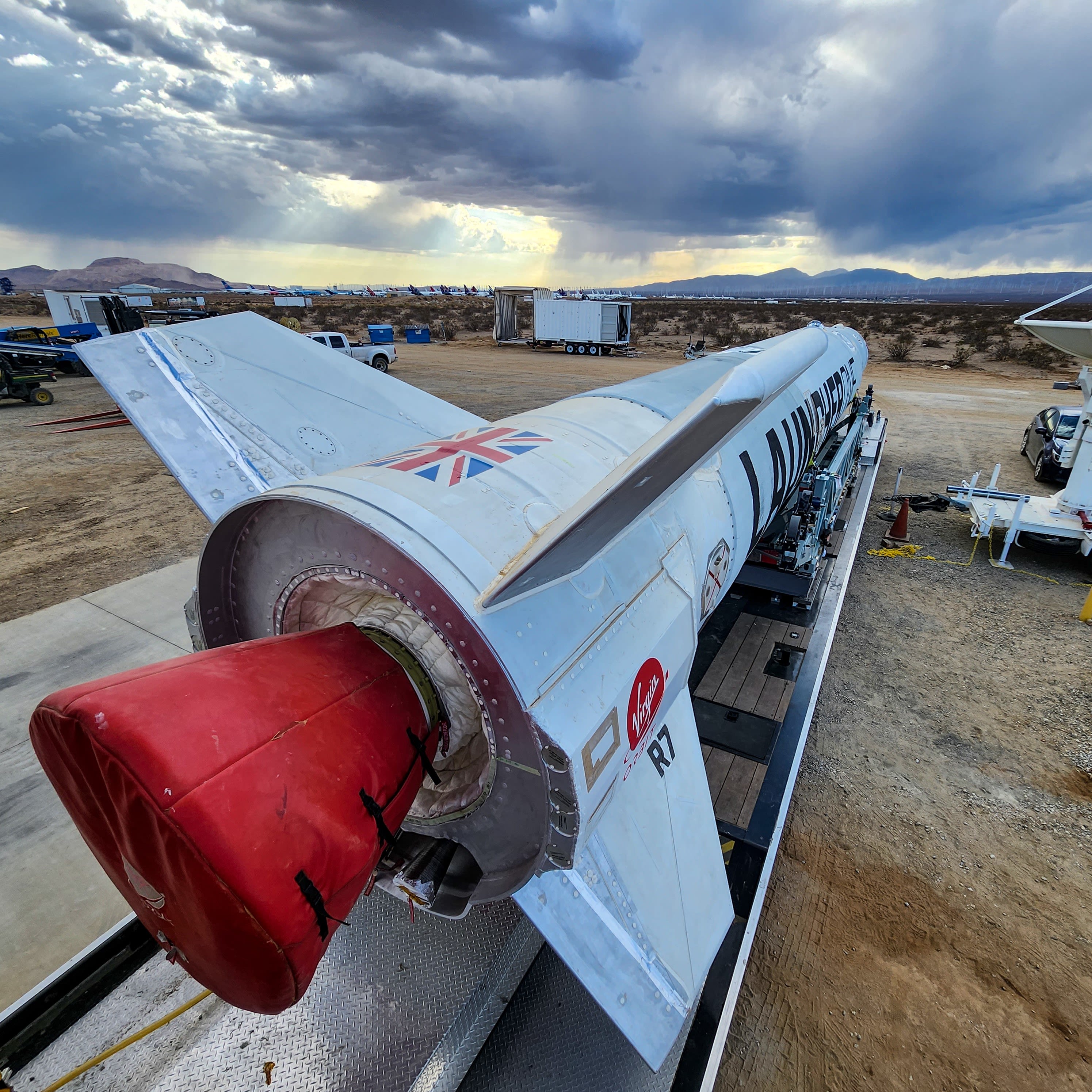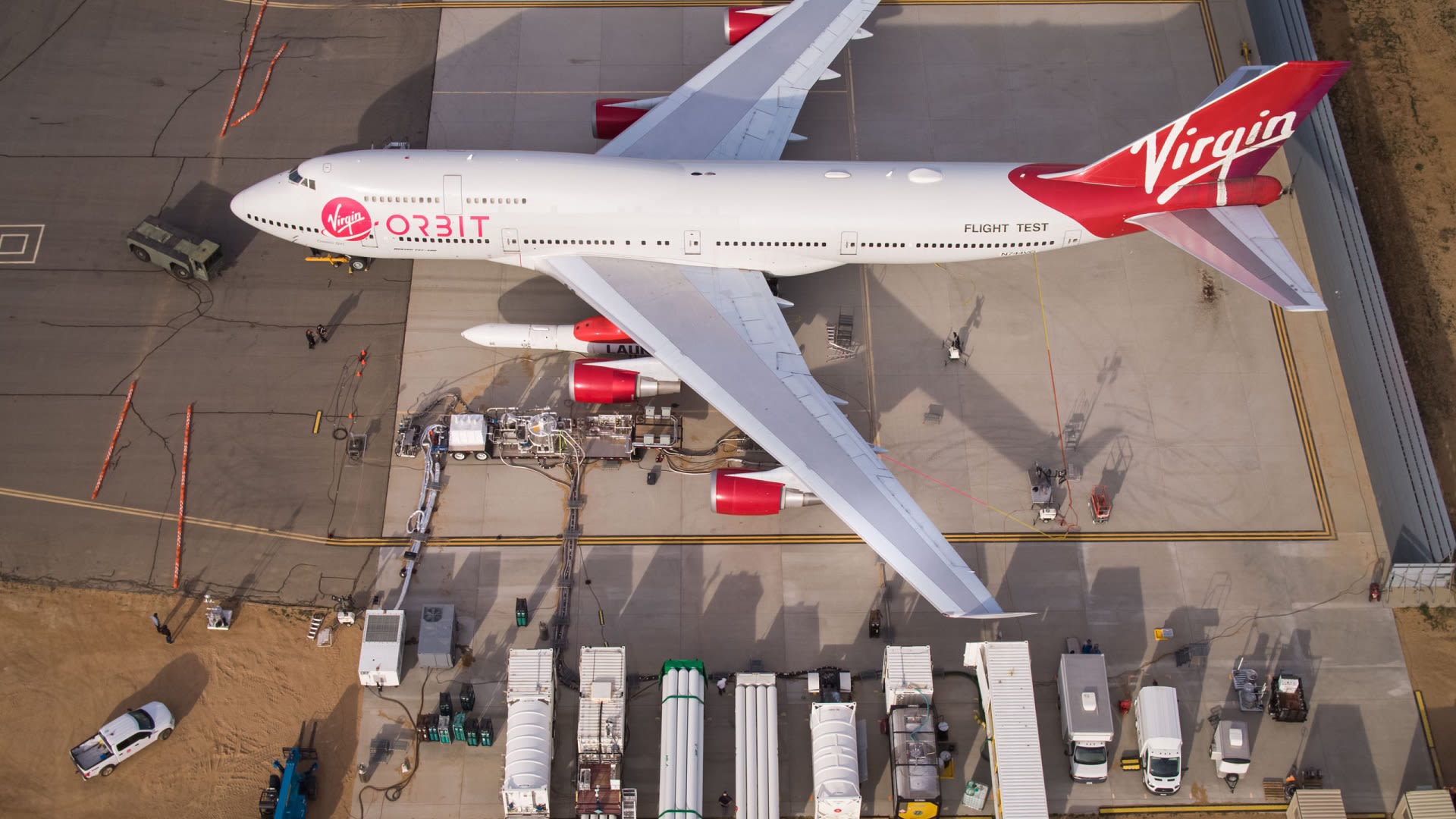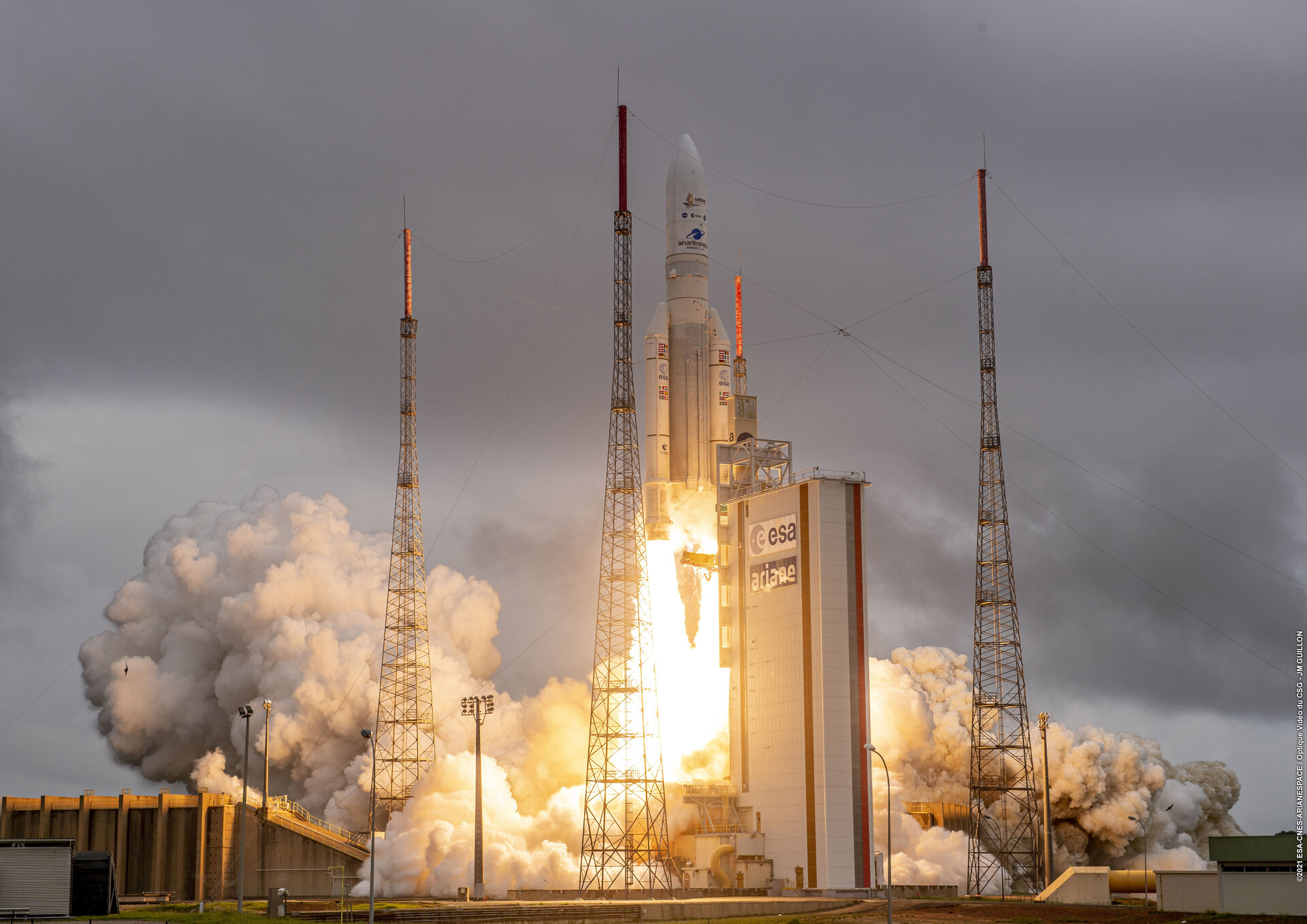Cosmic Girl, a Boeing 747 with a rocket under its wing, will soon take off from Spaceport Cornwall, Newquay. The LauncherOne rocket will be released as the plane flies 35,000ft over the Atlantic Ocean, its engine will be ignited, and from there nine satellites will be launched into orbit.
The “Start Me Up" mission – named after the Rolling Stones song as a nod to Virgin's musical heritage – will mark the first orbital launch from the UK as well as the first commercial launch from Western Europe.

The LauncherOne rocket. Credit: Virgin Orbit
Boosting the UK sector
The UK's £16 billion space and satellite industry is already growing fast. Reliance on satellite data for services including communications and weather forecasting are driving this growth in the UK as well as around the world.
Although rockets have previously been launched from the UK for atmospheric research, up until now only one UK satellite has been launched on a British rocket. However this satellite, Prospero, launched on the UK Black Arrow rocket in 1971, lifted off from Australian soil. With the Start Me Up launch imminent, satellites that have been designed, built, and tested here in the UK might start to have considerably less distance to travel before they make their journeys into space.
Having a launch capability will be beneficial for the UK in a number of ways – reducing cost, environmental impact and potential for delays. New spaceports in the UK will also lead to further growth and innovation in an already booming sector, as well as hundreds of career opportunities.

Cosmic Girl – the former Virgin Atlantic Boeing 747 that will carry LauncherOne. Credit: Virgin Orbit
Not your “regular" launch
Start Me Up is an example of a horizontal launch, meaning it probably won't look like what comes to mind when most of us imagine a rocket launch.
The most common type of launch is a vertical launch. The James Webb Space Telescope, which launched in December 2021, and Artemis 1, launched in November 2022, are both examples of vertical launches, from Europe's Spaceport in French Guiana and Kennedy Space Centre in the United States respectively. For this type of launch, the first rocket stage is ignited and launches vertically, falling back to Earth while the second stage carries the payload onto the next part of its journey.

A vertical rocket launch – the Webb Telescope lifts off from Europe's Spaceport in 2021. Credit: ESA/CNES/Arianespace
Horizontal launches can take place from a regular airport runway. An aircraft will release a rocket from underneath its wing, which is then ignited and launched into space. Horizontal launches require less fuel, but the use of an aircraft, even a large one like Cosmic Girl, means that the mass of payload is limited.
Start Me Up will launch a number of satellites into orbit. These include ForgeStar-0, developed by Welsh company Space Forge, which will test their reusable platform to enable in-space manufacturing. Also on-board will be the Coordinated Ionospheric Reconstruction CubeSat Experiment (CIRCE) – part of a joint mission between the UK's Defence Science and Technology Laboratory (Dstl) and the US Naval Research Laboratory to accurately characterise the dynamic ionosphere.
(Note: We've hosted talks from Space Forge Co-Founder and CTO Andrew Bacon and Dstl lead scientist Dr Gemma Attrill at our 17th and 18th Appleton Space Conferences! Follow the links to listen to their talks about ForgeStar and CIRCE.)
It is hoped that eventually, up to eight Virgin Orbit horizontal launches a year will take off from Spaceport Cornwall. Vertical launches from mainland Scotland and Shetland will also carry satellites into space in the not-too-distant future.
An exciting start to 2023!
With four of the satellites due to launch from Cornwall having been built in the UK, it's a very exciting prospect that satellites designed, built, and tested in the UK – at facilities like our own at RAL Space – may soon launch from the UK too.
Virgin Orbit are live streaming coverage of pre-flight operations and launch commentary on their YouTube channel, starting at 9:15pm UK time.

The Start Me Up mission patch. Credit: Virgin Orbit
The Payloads
More information on the payloads, from this Virgin Orbit press release.
IOD-3 AMBER (aka IOD-3) – Developed by Satellite Applications Catapult (“SA Catapult") and Horizon Technologies and built by AAC Clyde Space, all based in the U.K. IOD-3 Amber is expected to be the first of more than 20 Amber satellites to provide space-based Maritime Domain Awareness (MDA) data to users.
Prometheus-2 – Two cubesats owned by the U.K. Ministry of Defence's (MOD) Defence Science & Technology Laboratory Dstl. These satellites, co-funded with Airbus Defence and Space who are designing them jointly with In-Space Missions, will support MOD science and technology (S&T) activities both in orbit and on the ground through the development of ground systems focused at Dstl's site near Portsmouth.
CIRCE (Coordinated Ionospheric Reconstruction CubeSat Experiment) – CIRCE is part of a joint mission between the U.K.'s Defence Science and Technology Laboratory and the U.S. Naval Research Laboratory (NRL).
DOVER – Developed by RHEA Group in the UK, it is the company's first satellite in its 30-year history. The satellite is being co-funded through the European Space Agency's (ESA) Navigation Program (NAVISP) and built by Open Cosmos of the United Kingdom. DOVER is a SmallSat that was created as a pathfinder for resilient global navigation satellite systems.
ForgeStar-0 – Developed by Space Forge of Wales, the satellite is a fully returnable and reusable platform to enable in-space manufacturing. This launch will be the first for the company's ForgeStar platform and will test future returns from space technology.
AMAN – Oman's first orbital mission, it is a single Earth observation satellite meant to demonstrate the future feasibility of a larger constellation and was developed after a memorandum of understanding among the Sultanate of Oman, Polish Small Satellite manufacturer and operator SatRev, Poland-originated AI data analytics specialists TUATARA, and Omani-based merging technology innovator ETCO. The agreement includes additional planned small satellites, including this, the first in Oman's history.
STORK-6 – Stork-6 is the next installment of Polish Small Satellite manufacturer and operator SatRev's STORK constellation. Virgin Orbit previously launched two spacecraft in this constellation on a previous launch and looks forward to continuing to launch SatRev's STORK spacecraft in the future.
